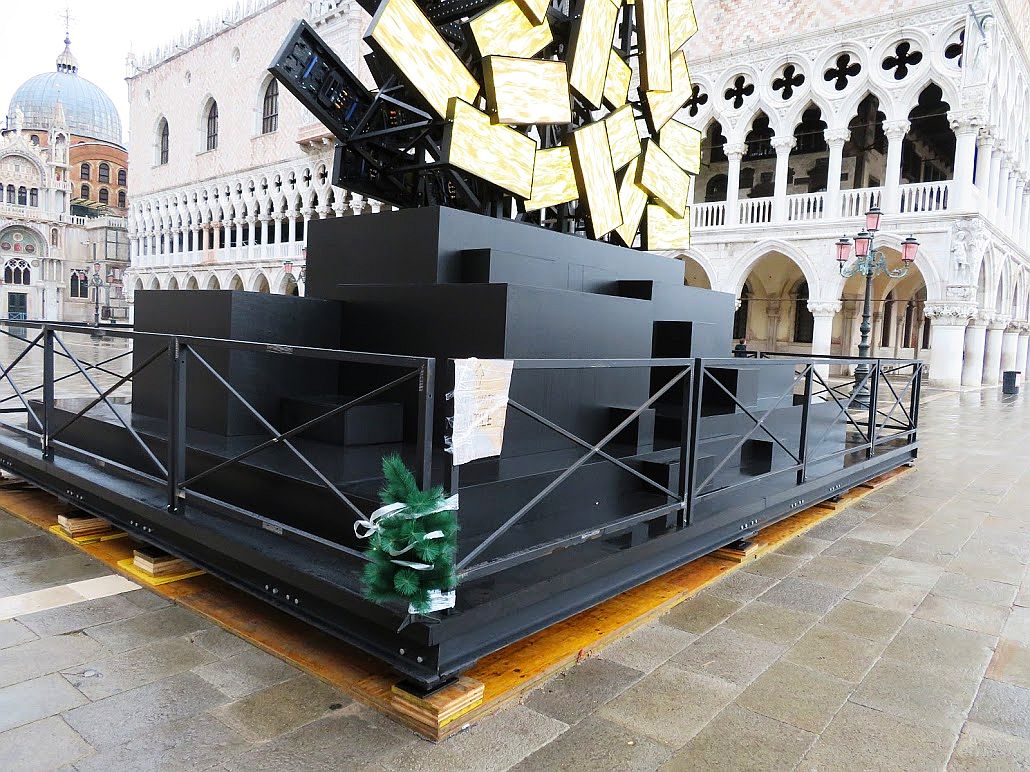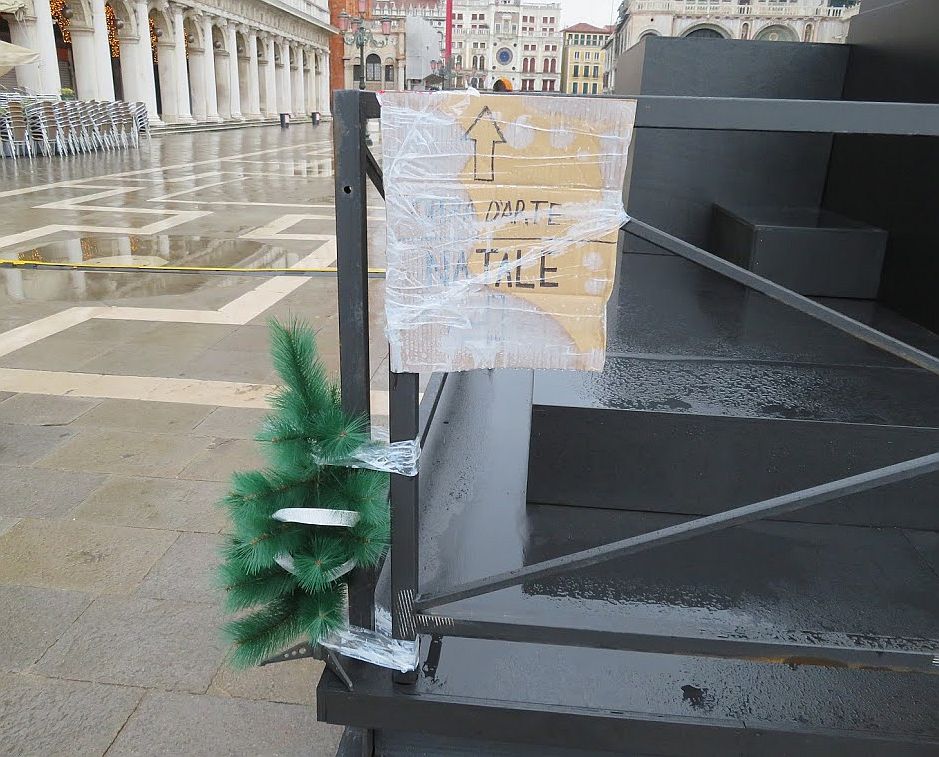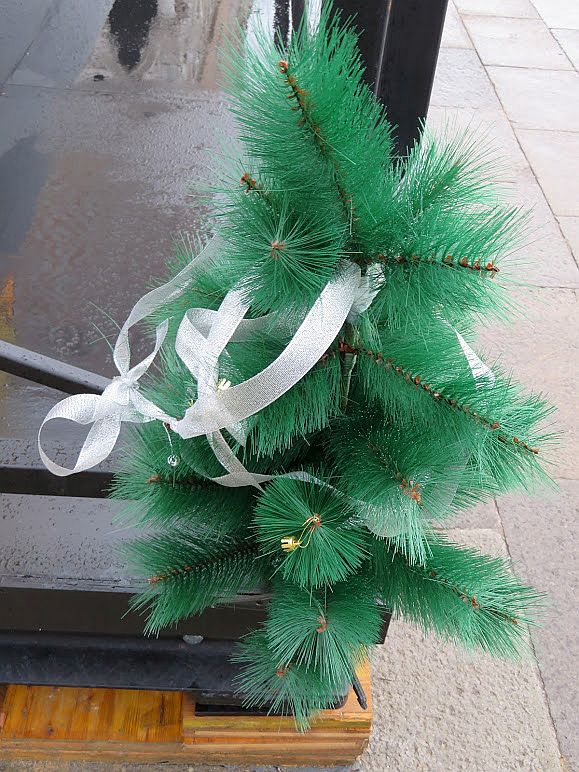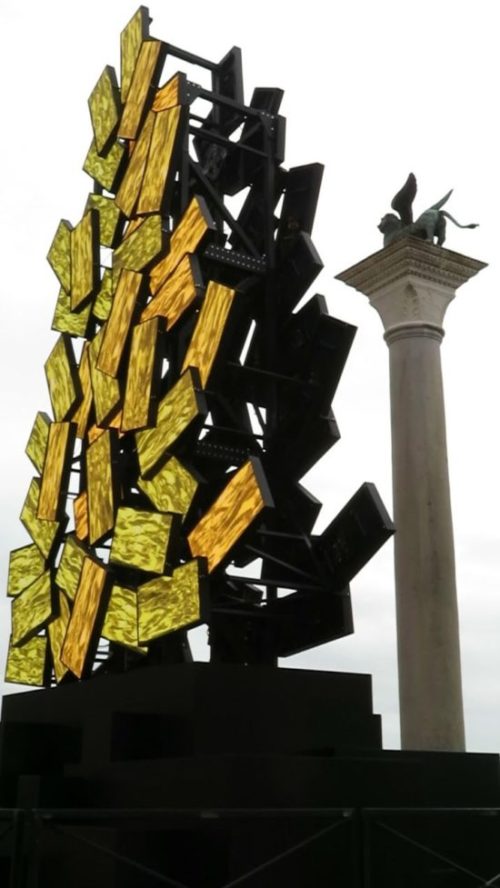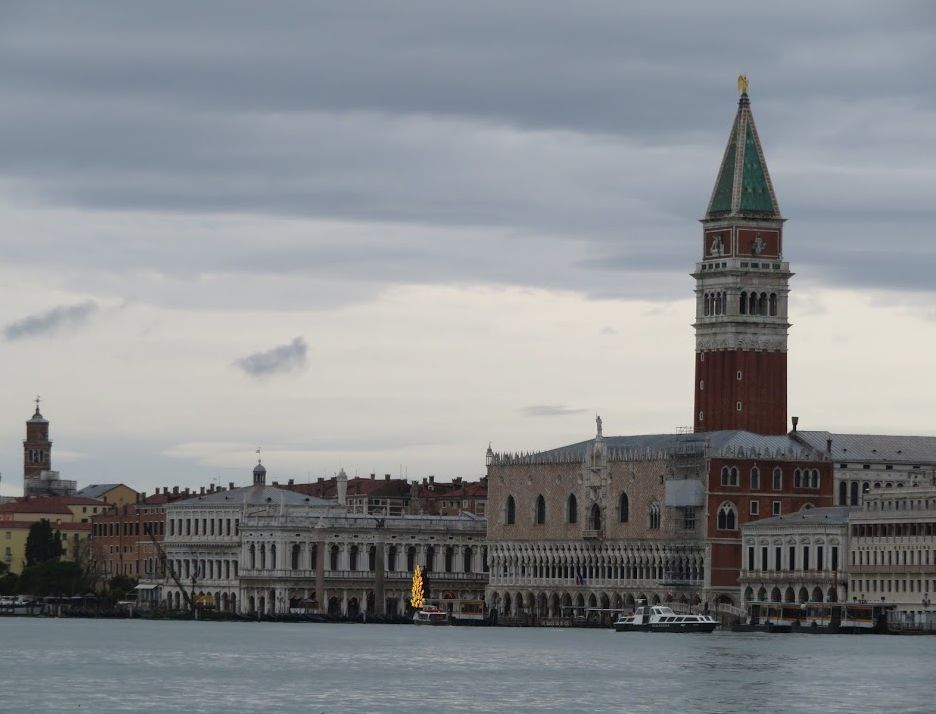
You might wonder how a Christmas tree could possibly make people mad (though considering the year almost past, you might not). Whatever your Yuletide habits, a lot of Venetians would have welcomed a honking big Norway spruce to its traditional place in the Piazzetta, some looming aromatic conifer loaded with scintillating lights, sumptuous ribbons, glittering glass baubles, etc. It would have been greeted with open arms, many smartphones, and shining faces.
But because we haven’t had enough computer screens in our lives this year, now we have the Christmas Screen.
It’s art, naturally, art that, from afar, sort of resembles a tree, though this structure isn’t even alive. But it does have the consolation of being, as I mentioned, art, groaning beneath loads of symbolism and verbiage.
Installed in the usual position last Thursday, this structure is the creation of artist Fabrizio Plessi, sponsored by the Assicurazioni Generali. No way of my knowing who had the final, or even the first, word in the discussions that led to this creation. It can’t be to attract tourists, because at this point in the evolution of the pandemic it would be easier to attract a Great Auk than a tourist.

The public has not been amused by a novelty that appears to be more like a refugee from the Biennale than a festive fixture.
The artist explains: “It’s a message of hope.”
The public responds: “A heap of scrap metal.” “Hanging ingots.”

“This year we need a message of light,” Sig. Plessi told La Nuova Venezia. “The 80 modules represent the flow of that many different cultures.” Furthermore, it would seem that the installation symbolically unites earth, water and sky.
“I understand whoever would have preferred a traditional tree,” Plessi continues, “but this is a message of hope. The use of digital in this context becomes spiritual emotion and expresses itself in the only possible language today, permitting us to reach others even if they are physically distant.”
Not sure about you, but while this is the sort of hot air that keeps the Biennale aloft for months on end, it doesn’t do anything for the spirit of Christmas. My own view is that the more you explain something, the less that something actually communicates. If you have to tell people what to think or feel about your creation, you’ve acknowledged that the creation is mute.
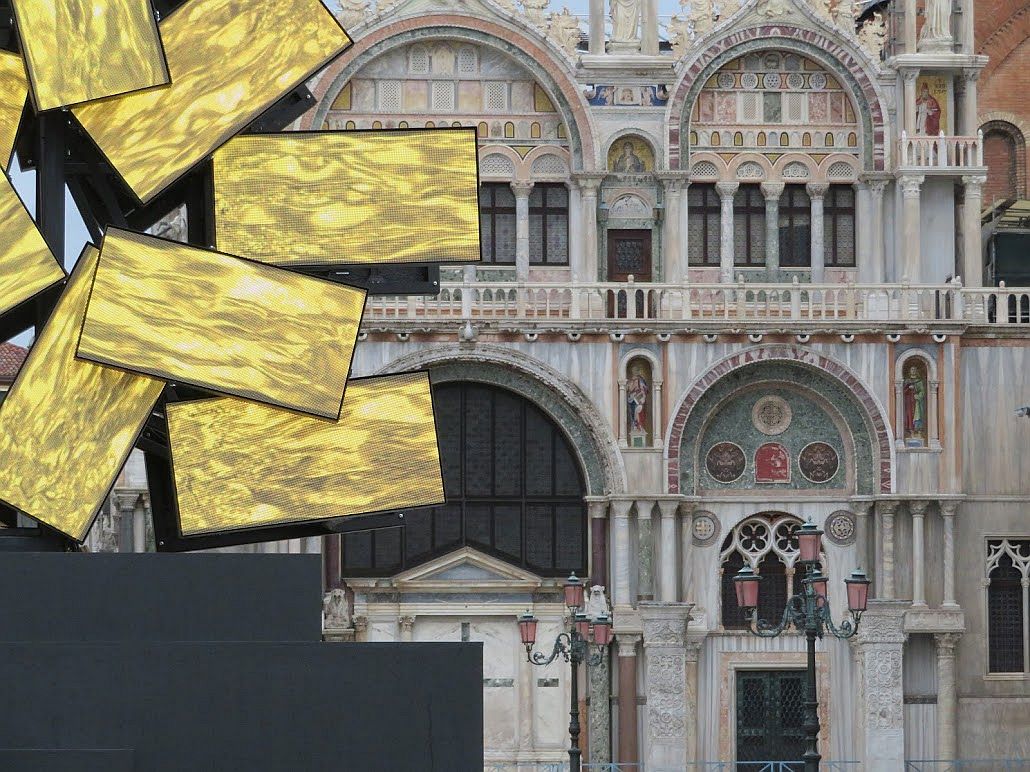
There is more. “This tree is well planted in tradition, but it is also a tree that wants to talk to the world,” says Simone Venturini, the city councilor for Tourism. “Personally I find it marvelous because it shows that Venice knows how to be, together, the city of great history and of the future. It shows that you can make contemporary art without waiting for the Biennale.” Of course you can, as long as you have a sponsor. I don’t want to put a pricetag on Christmas, but this installation, along with 50 kilometers of strings of lights in the Piazza San Marco and on the mainland, not to mention the lights shining on the Rialto bridge, cost a total of some 800,000 euros. So he could also have said that you don’t need to wait for the Biennale in order to spend money. I knew that.
Many years ago a homeless man at the entrance to the subway in New York stopped me with this request: “Hey lady, could you spare some change for an old wino?” How could I say no? His candor was irresistible.
If Mr. Plessi had said, “I like to make art using digital stuff. I don’t know why, I just like it. Maybe because it’s shiny. So here’s sort of a tree made of digital stuff. Kind of made me think of Christmas. Hope yours is happy, in spite of everything,” I’d have started a Fabrizio Plessi fan club.
